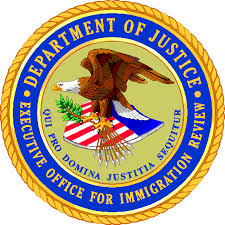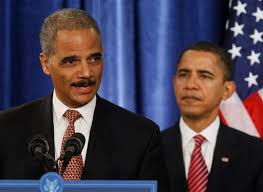America's 'crack' plagueColombia-San Francisco Bay Area drug pipeline | |
| Published: Aug. 18, 1996 BY GARY WEBB FOR THE BETTER PART of a decade, a San Francisco Bay Area drug ring sold tons of cocaine to the Crips and Bloods street gangs of Los Angeles and funneled millions in drug profits to a Latin American guerrilla army run by the U.S. Central Intelligence Agency, a Mercury News investigation has found. This drug network opened the first pipeline between Colombia's cocaine cartels and the black neighborhoods of Los Angeles, a city now known as the "crack'' capital of the world. The cocaine that flooded in helped spark a crack explosion in urban America � and provided the cash and connections needed for L.A.'s gangs to buy automatic weapons. It is one of the most bizarre alliances in modern history: the union of a U.S.-backed army attempting to overthrow a revolutionary socialist government and the Uzi-toting "gangstas'' of Compton and South-Central Los Angeles. | Testimony links U.S. to drugs-guns trade |
| The army's financiers -- who met with CIA agents both before and during the time they were selling the drugs in L.A. -- delivered cut-rate cocaine to the gangs through a young South-Central crack dealer named Ricky Donnell Ross.
The cash Ross paid for the cocaine, court records show, was then used to buy weapons and equipment for a guerrilla army named the Fuerza Democratica Nicaraguense (Nicaraguan Democratic Force) or FDN, the largest of several anti-communist commonly called the Contras. | Biographical information on Rick Ross |
| While the FDN's war is barely a memory today, black America is still dealing with its poisonous side effects. Urban neighborhoods are grappling with legions of homeless crack addicts. Thousands of young black men are serving long prison sentences for selling cocaine -- a drug that was virtually unobtainable in black neighborhoods before members of the CIA's army started bringing it into South-Central in the 1980s at bargain-basement prices. And the L.A. gangs, which used their enormous cocaine profits to arm themselves and spread crack across the country, are still thriving, turning entire blocks of major cities into occasional war zones. | |
 "There is a saying that the ends justify the means,'' former FDN leader and drug dealer Oscar Danilo Blandon Reyestestified during a recent cocaine trafficking trial in San Diego. "And that's what Mr. Bermudez (the CIA agent who commanded the FDN) told us in Honduras, OK? So we started raising money for the Contra revolution.'' "There is a saying that the ends justify the means,'' former FDN leader and drug dealer Oscar Danilo Blandon Reyestestified during a recent cocaine trafficking trial in San Diego. "And that's what Mr. Bermudez (the CIA agent who commanded the FDN) told us in Honduras, OK? So we started raising money for the Contra revolution.''Recently declassified reports, federal court testimony, undercover tapes, court records here and abroad and hundreds of hours of interviews over the past 12 months leave no doubt that Blandon was no ordinary drug dealer. | Biographical information on Danilo Blandon |
| Shortly before Blandon -- who had been the drug ring's Southern California distributor -- took the stand in San Diego as a witness for the U.S. Department of Justice, federal prosecutors obtained a court order preventing defense lawyers from delving into his ties to the CIA. Blandon, one of the FDN's founders in California, "will admit that he was a large-scale dealer in cocaine, and there is no additional benefit to any defendant to inquire as to the Central Intelligence Agency,'' Assistant U.S. Attorney L.J. O'Neale argued in his motion shortly before Ross' trial on cocaine trafficking charges in March. | Motion to preclude reference to CIA involvement |
| The most Blandon would say in court about who called the shots when he sold cocaine for the FDN was that "we received orders from the -- from other people.'' The 5,000-man FDN, records show, was created in mid-1981 when the CIA combined several existing groups of anti-communist exiles into a unified force it hoped would topple the new socialist government of Nicaragua. From 1982 to 1988, the FDN -- run by both American and Nicaraguan CIA agents -- waged a losing war against Nicaragua's Sandinista government, the Cuban-supported socialists who'd overthrown U.S.-backed dictator Anastasio Somoza in 1979. | |
| Blandon, who began working for the FDN's drug operation in late 1981, testified that the drug ring sold almost a ton of cocaine in the United States that year -- $54 million worth at prevailing wholesale prices. It was not clear how much of the money found its way back to the CIA's army, but Blandon testified that "whatever we were running in L.A., the profit was going to the Contra revolution.'' | Blandon's testimony |
| At the time of that testimony, Blandon was a full-time informant for the Drug Enforcement Administration, a job the U.S. Department of Justice got him after releasing him from prison in 1994. Though Blandon admitted to crimes that have sent others away for life, the Justice Department turned him loose on unsupervised probation after only 28 months behind bars and has paid him more than $166,000 since, court records show. | Motion for reduction of Oscar Danilo Blandon's sentence |
"He has been extraordinarily helpful,'' federal prosecutor O'Neale told Blandon's judge in a plea for the trafficker's release in 1994. Though O'Neale once described Blandon to a grand jury as "the biggest Nicaraguan cocaine dealer in the United States,'' the prosecutor would not discuss him with the Mercury News.A known dealer since '74 has stayed out of U.S. jails | |
 Blandon's boss in the FDN's cocaine operation, Juan Norwin Meneses Cantarero, has never spent a day in a U.S. prison, even though the federal government has been aware of his cocaine dealings since at least 1974, records show. Blandon's boss in the FDN's cocaine operation, Juan Norwin Meneses Cantarero, has never spent a day in a U.S. prison, even though the federal government has been aware of his cocaine dealings since at least 1974, records show.Meneses -- who ran the drug ring from his homes in the San Francisco Bay Area -- is listed in the DEA's computers as a major international drug smuggler and was implicated in 45 separate federal investigations. Yet he and his cocaine-dealing relatives lived quite openly in the Bay Area for years, buying homes in Pacifica and Burlingame, along with bars, restaurants, car lots and factories in San Francisco, Hayward and Oakland. | Biographical information on Norwin Meneses |
| "I even drove my own cars, registered in my name,'' Meneses said during a recent interview in Nicaragua. Meneses' organization was "the target of unsuccessful investigative attempts for many years,'' prosecutor O'Neale acknowledged in a 1994 affidavit. But records and interviews revealed that a number of those probes were stymied not by the elusive Meneses but by agencies of the U.S. government. Agents from four organizations -- the DEA, U.S. Customs, the Los Angeles County Sheriff's Department and the California Bureau of Narcotic Enforcement -- have complained that investigations were hampered by the CIA or unnamed "national security'' interests. 1988 investigation hit a wall of secrecyOne 1988 investigation by a U.S. Senate subcommittee ran into a wall of official secrecy at the Justice Department.In that case, congressional records show, Senate investigators were trying to determine why the U.S. attorney in San Francisco, Joseph Russoniello, had given $36,000 back to a Nicaraguan cocaine dealer arrested by the FBI. The money was returned, court records show, after two Contra leaders sent letters to the court swearing that the drug dealer had been given the cash to buy weapons for guerrillas. Russoniello said it was cheaper to give the money back than to disprove that claim. "The Justice Department flipped out to prevent us from getting access to people, records -- finding anything out about it,'' recalled Jack Blum, former chief counsel to the Senate subcommittee that investigated allegations of Contra cocaine trafficking. "It was one of the most frustrating exercises that I can ever recall.'' It wasn't until 1989, a few months after the Contra-Sandinista war ended and five years after Meneses moved from the Peninsula to a ranch in Costa Rica, that the U.S. government took action against him -- sort of. Federal prosecutors in San Francisco charged Meneses with conspiracy to distribute one kilo of cocaine in 1984, a year in which he was working publicly with the FDN. | |
In San Francisco photo, Meneses seen with CIA operativeMeneses' work was so public, in fact, that he posed for a picture in June 1984 in a kitchen of a San Francisco home with the FDN's political boss, Adolfo Calero, a longtime CIA operative who became the public face of the Contras in the United States.According to the indictment, Meneses was in the midst of his alleged cocaine conspiracy at the time the picture was taken. But the indictment was quickly locked away in the vaults of the San Francisco federal courthouse, where it remains today � inexplicably secret for more than seven years. Meneses was never arrested. | 1984 meeting of anti-communist group in San Francisco |
| Reporters found a copy of the secret indictment in Nicaragua, along with a federal arrest warrant issued Feb. 8, 1989. Records show the no-bail warrant was never entered into the national law enforcement database called NCIC, which police use to track down fugitives. The former federal prosecutor who indicted him, Eric Swenson, declined to be interviewed. After Nicaraguan police arrested Meneses on cocaine charges in Managua in 1991, his judge expressed astonishment that the infamous smuggler went unmolested by American drug agents during his years in the United States. | Indictment of Norwin Meneses |
| "How do you explain the fact that Norwin Meneses, implicated since 1974 in the trafficking of drugs ... has not been detained in the United States, a country in which he has lived, entered and departed many times since 1974?'' Judge Martha Quezada asked during a pretrial hearing. "Well, that question needs to be asked to the authorities of the United States,'' replied Roger Mayorga, then chief of Nicaragua's anti-drug agency. U.S. officials amazed Meneses remained freeHis seeming invulnerability amazed American authorities as well.A Customs agent who investigated Meneses in 1980 before transferring elsewhere said he was reassigned to San Francisco seven years later "and I was sitting in some meetings and here's Meneses' name again. And I can remember thinking, "Holy cow, is this guy still around?'.'' Blandon led an equally charmed life. For at least five years he brokered massive amounts of cocaine to the black gangs of Los Angeles without being arrested. But his luck changed overnight. On Oct. 27, 1986, agents from the FBI, the IRS, local police and the Los Angeles County sheriff fanned out across Southern California and raided more than a dozen locations connected to Blandon's cocaine operation. Blandon and his wife, along with numerous Nicaraguan associates, were arrested on drug and weapons charges. The search warrant affidavit reveals that local drug agents knew plenty about Blandon's involvement with cocaine and the CIA's army nearly 10 years ago. "Danilo Blandon is in charge of a sophisticated cocaine smuggling and distribution organization operating in Southern California,'' L.A. County sheriff's Sgt. Tom Gordon said in the 1986 affidavit. "The monies gained from the sales of cocaine are transported to Florida and laundered through Orlando Murillo, who is a high-ranking officer of a chain of banks in Florida named Government Securities Corporation. From this bank the monies are filtered to the Contra rebels to buy arms in the war in Nicaragua.'' Corporate records show that Murillo -- a Nicaraguan banker and relative of Blandon's wife -- was a vice-president of Government Securities Corporation in Coral Gables, a large brokerage firm that collapsed in 1987 amid allegations of fraud. Murillo did not respond to an interview request. Despite their intimate knowledge of Blandon's operations, the police raids were a spectacular failure. Every location had been cleaned of anything remotely incriminating. No one was ever prosecuted. Ron Spear, a spokesman for Los Angeles County Sheriff Sherman Block, said Blandon somehow knew that he was under police surveillance. Others thought so, too. "The cops always believed that investigation had been compromised by the CIA,'' Los Angeles federal public defender Barbara O'Connor said in a recent interview. O'Connor knew of the raids because she later defended the raids' leader, Sgt. Gordon, against federal charges of police corruption. Gordon, convicted of tax evasion, declined to be interviewed. Lawyer suggests aid was at root of problemFBI records show that soon after the raids, Blandon's defense attorney, Bradley Brunon, called the sheriff's department to suggest that his client's troubles stemmed from a most unlikely source: a recent congressional vote authorizing $100 million in military aid to the CIA's Contra army. | |
| According to a December 1986 FBI Teletype, Brunon told the officers that the "CIA winked at this sort of thing. ... (Brunon) indicated that now that U.S. Congress had voted funds for the Nicaraguan Contra movement, U.S. government now appears to be turning against organizations like this.'' That FBI report, part of the files of former Iran-Contra Special Prosecutor Lawrence Walsh, was made public only last year, when it was released by the National Archives at the Mercury News' request. | FBI Teletype regarding conversation with attorney Bradley Brunon |
| Blandon has also implied that his cocaine sales were, for a time, CIA-approved. He told a San Francisco federal grand jury in 1994 that once the FDN began receiving American taxpayer dollars, the CIA no longer needed his kind of help. "When Mr. Reagan get in the power, we start receiving a lot of money,'' Blandon testified. "And the people that was in charge, it was the CIA, so they didn't want to raise any (drug) money because they have, they had the money that they wanted.'' "From the government?" asked Assistant U.S. Attorney David Hall. "Yes," for the Contra revolution," Blandon said. "So we started -- you know, the ambitious person -- we started doing business by ourselves." Asked about that, prosecutor Hall said, "I don't know what to tell you. The CIA won't tell me anything." None of the government agencies known to have been involved with Meneses and Blandon over the years would provide the Mercury News with any information about them. A Freedom of Information Act request filed with the CIA was denied on national security grounds. FOIA requests filed with the DEA were denied on privacy grounds. Requests filed months ago with the FBI, the State Department and the Immigration and Naturalization Service have produced nothing so far. None of the DEA officials known to have worked with the two men would talk to a reporter. Questions submitted to the DEA's public affairs office in Washington were never answered, despite repeated requests. Blandon's lawyer, Brunon, said in an interview that his client never told him directly that he was selling cocaine for the CIA, but the prominent Los Angeles defense attorney drew his own conclusions from the "atmosphere of CIA and clandestine activities'' that surrounded Blandon and his Nicaraguan friends. "Was he involved with the CIA? Probably. Was he involved with drugs? Most definitely,'' Brunon said. "Were those two things involved with each other? They've never said that, obviously. They've never admitted that. But I don't know where these guys get these big aircraft ...'' That very topic arose during the sensational 1992 cocaine trafficking trial of Meneses after Meneses was arrested in Nicaragua in connection with a staggering 750-kilo shipment of cocaine. His chief accuser was his friend Enrique Miranda, a relative and former Nicaraguan military intelligence officer who had been Meneses' emissary to the cocaine cartel of Bogota, Colombia. Miranda pleaded guilty to drug charges and agreed to cooperate in exchange for a seven-year sentence. In a long, handwritten statement he read to Meneses' jury, Miranda revealed the deepest secrets of the Meneses drug ring, earning his old boss a 30-year prison sentence in the process. "He (Norwin) and his brother Luis Enrique had financed the Contra revolution with the benefits of the cocaine they sold,'' Miranda wrote. "This operation, as Norwin told me, was executed with the collaboration of high-ranking Salvadoran military personnel. They met with officials of the Salvadoran air force, who flew (planes) to Colombia and then left for the U.S., bound for an Air Force base in Texas, as he told me.'' Meneses -- who has close personal and business ties to a Salvadoran air force commander and former CIA agent named Marcos Aguado -- declined to discuss Miranda's statements during an interview at a prison outside Managua in January. He is scheduled to be paroled this summer, after nearly five years in custody. U.S. General Accounting Office records confirm that El Salvador's air force was supplying the CIA's Nicaraguan guerrillas with aircraft and flight support services throughout the mid-1980s. Miranda did not name the Air Force base in Texas where the FDN's cocaine was purportedly flown. The same day the Mercury News requested official permission to interview Miranda, he disappeared. While out on a routine weekend furlough, Miranda failed to return to the Nicaraguan jail where he'd been living since 1992. Though his jailers, who described him as a model prisoner, claimed Miranda had escaped, they didn't call the police until a Mercury News correspondent showed up and discovered he was gone. He has not been seen in nearly a year. MONDAY: How the drug ring worked, and how crack was "born" in the San Francisco Bay Area. Plus, the story of how the U.S. government gave back $36,000 seized from a drug dealer after he claimed the money belonged to the Contras. Additional reporting for this series in Nicaragua and Costa Rica was done by Managua journalist Georg Hodel. Research assistance at the Nicaraguan Supreme Court in Managua was done by journalist Leonore Delgado. | |
|
___________
Epilogue

View the full 390 page official U.S. Dept of Justice Special Report (December 1997) on Iran-Contra's CIA drug trafficking. The report limited itself to the question of the significance of such operation in the crack epidemic of that decade. It entirely ignored the longer lasting problem. Camaraderie of federal and local law enforcement that goes back some 30 years now, and is based on partnership in crimes - profiteering on drug sales in LA. It is the true matter underlying the Rampart-scandal, and also the true reason that the Rampart scandal was covered up by both federal and local agencies.
Obviously - the involvement of judges such as Jacqueline Connor in the Rampart scandal raises the question whether she was and is in fact at the top of the feeding chain of the drug markets in LA.
http://inproperinla.com/00-00-00-us-doj-oig_special_9712_full-report-cia-drug-sales-in-la.pdf

"This case should demonstrate that the FBI will pursue all allegations of judicial corruption vigorously, as public corruption violations are among the most serious of all criminal conduct and can tear at the fabric of a democratic society," said John F. Pikus, special agent in charge of the Albany division, in a prepared statement.












![[]](http://t0.gstatic.com/images?q=tbn:zjS4lUNdCkM-vM:http://img.thesun.co.uk/multimedia/archive/00506/Alex-Kozinski_280_506474a.jpg)
![[]](http://t1.gstatic.com/images?q=tbn:ChBZ4izwsdbP1M:http://www.stanrosenthallphotography.com/gallery/art/art6.jpg)
![[]](http://t3.gstatic.com/images?q=tbn:MbEfGGWqh1XNVM:http://www.pimagazine.com/books/fraud_cover.jpg)


